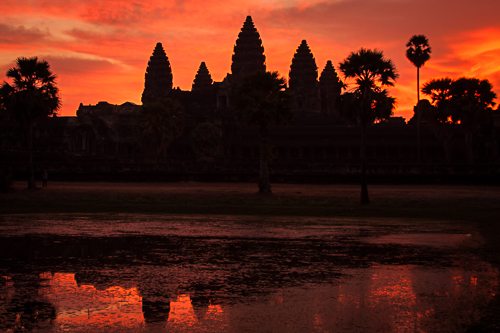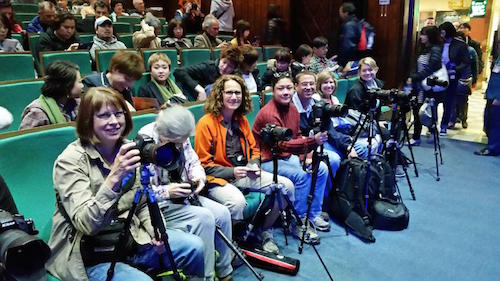Today’s issue is straight from our sunrise shoot at Angkor Wat Temple in Cambodia.
I’m not much of a morning person… so I was nervous about getting up before the sun and getting set up with my tripod at Angkor Wat.
But WOW, what an amazing experience. Not only was it much cooler, less crowded, and exciting to be at a famous temple before the sun was up (I felt like we were sneaking into an exclusive party), but the shots were well worth the early wakeup call.
Here’s my best shot:
0.6 seconds at F/6.3, ISO 100
Sunrise is a great time to shoot because the sky comes alive with color.
When we visited this same spot the evening before, the skies were dull and cloudy. But the good news is, visiting the site the day before gave us the opportunity to scout out the best location for the morning shoot, so we were prepared and knew exactly where to go come dawn.
And it was a good thing we did, because it was very dark when we arrived. I’m so glad Efrain and our local guide Son included this exercise for us.
Here are a few tips we picked up from them on getting the best sunrise photos…
*Scout your location ahead of time in the daylight
*Plan to arrive 30 minutes before sunrise (once the sun starts to rise, you’ll have about 15-20 minutes of good shooting before the sun is too bright)
*Bring a small flashlight to read your camera dials in the dark.
*Use a rock-solid tripod
*Make sure your tripod is level
*Use a low ISO (100-200)
*Turn off vibration reduction
*Use a remote trigger to reduce the vibration you might cause my pressing the shutter button with your finger
*Start with an aperture of F5.6 and adjust from there
Many photographers don’t like using tripods because they slow you down and are cumbersome to carry.
In low-light conditions, they opt for ratcheting up their ISO to increase their shutter speed and hopefully get a sharp image.
Unfortunately, raising your ISO will also increase noise (also referred to as “grain”) in the dark areas of an image. (And when shutter speeds are more than a couple seconds, it’s impossible to hand hold). Setting a low ISO (100 or 200) and using a tripod, on the other hand, will produce images that contain clean, rich shadows.
We carried our tripods with us all around Vietnam and Cambodia—and though we weren’t too excited about toting them along on Day 1…by the end of the week, we understood why they were so important.
Here’s a bunch of us at the water puppet show where our guides got us front row seats…
More photos to come tomorrow! And why you should include people photos in your shoot.
[Editor’s Note: Learn more about how you can fund your travels and make an extra income with photography, travel writing, blogging, and more in our free online newsletter The Right Way to Travel. Sign up here today and we’ll send you a new report, Profit From Your Photos: A Quick-Start Guide, completely FREE.]



